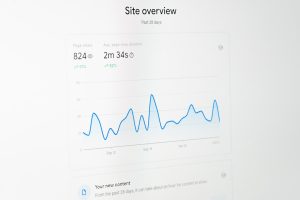
Website migrations are a significant turning point for any digital presence. Whether you’re moving to a new domain, replatforming, or executing a redesign, it’s imperative that you’re prepared to retain your hard-earned organic search traffic. In 2025, with search engine algorithms becoming more sophisticated and user behavior evolving, the stakes for migration are even higher. A proper SEO migration checklist is not optional — it’s essential.
This guide presents the 2025 Website Migration SEO Checklist designed specifically to help you avoid the most common – and often devastating – pitfalls that lead to traffic loss. Follow these strategies carefully to ensure a smooth, search-friendly transition.
1. Understand the Scope and Objectives of Your Migration
Before diving into technical execution, it’s vital to clarify the purpose and expected impact of your migration. Are you:
- Moving to a new domain?
- Redesigning the website UX and UI?
- Changing your CMS or eCommerce platform?
- Consolidating multiple websites into a single domain?
Different types of migrations carry different risks and require tailored SEO strategies. Document your goals and ensure all stakeholders are aligned from the beginning.
2. Run a Comprehensive Site Audit
Before anything changes, you must know what you already have. An in-depth audit sets a baseline and helps you prioritize what is vital during the move.
Key areas to assess:
- Current URL structure
- Top-performing pages (traffic, rankings, backlinks)
- Metadata (titles, descriptions, header tags)
- Page load times and Core Web Vitals
- Internal linking structure
Tools like Screaming Frog, Ahrefs, or Semrush can be invaluable during this phase.
3. Create a Detailed URL Mapping Strategy
This is one of the most critical components of your migration. You must ensure a one-to-one mapping of old URLs to their new equivalents to preserve link equity and search relevance.
Use a spreadsheet to document:
- Current URLs
- Target URLs
- Redirect status (301 permanent redirect)
- Priority/content type (blog, product, etc.)

Preserve as many existing URLs as possible. If URL structure must change, ensure all pages are correctly redirected using 301 status codes — not 302 or meta refreshes.
4. Benchmark Your SEO Performance
Establishing your SEO benchmarks prior to migration is essential. Monitor KPIs such as:
- Organic traffic by URL
- Keyword rankings
- Backlinks (quantity and quality)
- Click-through rate (CTR) from search
This data will serve as your reference point in post-migration analysis to identify any deviations and triage issues early.
5. Manage Your Backlink Profile
Backlinks remain a critical component of SEO. Compile a list of backlinks to your existing pages and prioritize outreach for the most valuable ones. Early communication with webmasters and partners can help you update inbound links to point to the new URLs directly.
Don’t rely solely on redirects. While they can retain link equity, direct links are more efficient and reduce dependency on server-side redirects.
6. Prepare Your Staging Environment
Build your new site in a secure, noindex staging environment. This allows you to develop and debug without search engines indexing incomplete or duplicate content.
Ensure:
- Staging is blocked from search engines using robots.txt and meta noindex
- The staging environment mirrors your production environment
- All content is transferred correctly: images, files, metadata, structured data, etc.
7. Optimize Content Before Launch
Migration is the perfect opportunity to refresh underperforming content, optimize keywords, correct duplicate content, and improve page structure.
Focus on:
- Improved readability and structure (H1s, H2s)
- Keyword integration and LSI terms
- Updated metadata for search intent
- Alt text for all images
- Implementing schema markup (JSON-LD format preferred in 2025)
8. Use an SEO-Friendly CMS and Hosting Provider
If you’re also replatforming, ensure the new CMS supports modern SEO best practices such as customizable URLs, metadata fields, sitemaps, and image optimization. Likewise, your host should offer reliable uptime, fast speeds, and HTTPS by default.

Confirm you can easily manage 301 redirects, generate sitemaps, and integrate analytics and tracking tools post-launch.
9. Launch With Caution
Never launch on a Friday. Pick a weekday early in the week to ensure your team is available to monitor site performance and address issues. When you’re ready to go live, follow these steps:
- Upload your redirect map
- Implement updated XML sitemaps
- Update robots.txt to allow crawling of your new site
- Verify the new domain in Google Search Console and Bing Webmaster Tools
Closely monitor server logs to ensure bots are crawling and indexing your site correctly.
10. Conduct a Post-Launch SEO Audit
Don’t assume the job is done after launch. Run another comprehensive audit focused on:
- Status code checks (look for 404s or faulty redirects)
- Sitemap indexation in Google Search Console
- Rendering and mobile usability
- Structured data validation
Tip: Use Google’s URL Inspection Tool to confirm correct indexing, mobile rendering, and canonicalization for critical pages.
11. Monitor SEO Metrics Continuously
Natural ranking fluctuations are normal in the first few weeks post-launch. However, a steep drop may indicate a serious issue. Watch your performance metrics daily for the first two weeks, then weekly for the next two months.
- Watch for high drop-off pages in analytics
- Use Google Search Console to check crawl errors and loss of index coverage
- Track core keywords weekly
If traffic loss persists, conduct a gap analysis comparing your pre- and post-migration content and structure to uncover and fix anomalies.
12. Communicate With Your Audience and Stakeholders
Migration is more than just a technical endeavor — it’s a change in user experience. Notify newsletter subscribers, social media followers, and key stakeholders of the update. Getting your new URLs shared and used by real users can help with search engine rediscovery and faster reindexing.
Conclusion
Website migration, if not handled properly, can undo years of SEO investment in days. But with strategy, preparation, and precision, you can ensure a zero-traffic-loss migration and even come out ahead.
Take the time to audit thoroughly, map URLs with care, and monitor relentlessly. Migrations may be complex, but with a documented SEO checklist and the right tools, you can keep your rankings strong and your users happy.






